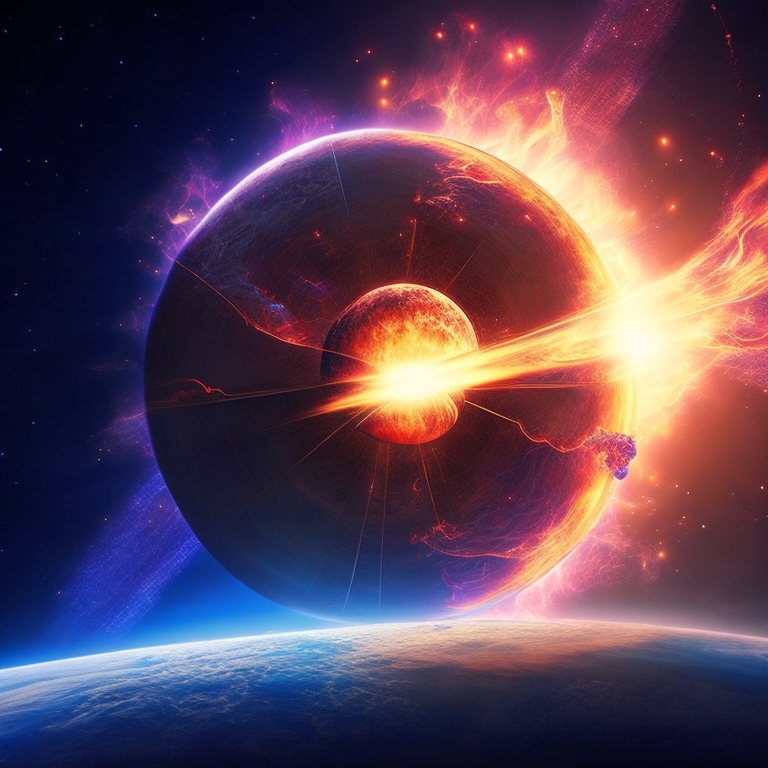Gamma-ray bursts (GRBs) are extraordinary cosmic events that captivate scientists and astronomers. These bursts of intense gamma-ray radiation originate from deep space, offering a mesmerizing spectacle that reveals the immense power and mystery of the universe.

Understanding Gamma-Ray Bursts:
Gamma-ray bursts are brief but immensely energetic events that emit gamma-ray radiation. They are categorized into two main types: long-duration bursts, lasting several seconds, and short-duration bursts, lasting only milliseconds. These bursts release more energy in a few seconds than our Sun will emit over its entire lifetime.
Long-duration bursts are often associated with the explosive deaths of massive stars, such as supernovae or hypernovae. As these massive stars exhaust their nuclear fuel, they undergo a catastrophic collapse, resulting in a powerful explosion that launches a beam of gamma rays into space. Short-duration bursts, on the other hand, are believed to be caused by the merger of compact objects, such as neutron stars or black holes.
The Impact of Gamma-Ray Bursts:
Gamma-ray bursts have a profound impact on their surroundings. The intense gamma-ray radiation can strip away the atmosphere of nearby planets and severely damage their ecosystems. However, the chances of a gamma-ray burst occurring close enough to Earth to cause significant harm are incredibly low. Our planet is shielded by its atmosphere, which absorbs and disperses much of the radiation. Additionally, the vast distances between galaxies and the rarity of nearby bursts provide an additional layer of protection.

Detecting and Studying Gamma-Ray Bursts:
Satellites equipped with gamma-ray detectors, such as NASA’s Fermi Gamma-ray Space Telescope and the European Space Agency’s INTEGRAL, play a crucial role in detecting and studying gamma-ray bursts. These observatories are specifically designed to capture the high-energy gamma rays emitted during these explosive events. They provide valuable data that helps astronomers understand the properties, duration, and distribution of gamma-ray bursts across the universe.
Ground-based observatories and telescopes also contribute to the study of gamma-ray bursts by monitoring the afterglow of the bursts in other wavelengths, such as X-rays, visible light, and radio waves. This multi-wavelength approach provides a comprehensive understanding of the bursts and their impact on the surrounding environment.

Unraveling the Mysteries:
Gamma-ray bursts continue to puzzle scientists and researchers. Studying the data obtained from observations, astronomers are striving to unravel the mysteries surrounding these energetic events. They are exploring various aspects, including the physics behind the bursts, their connection to stellar evolution, and their potential role in the formation of black holes and neutron stars.
Researchers are also investigating the link between gamma-ray bursts and other cosmic phenomena, such as gravitational waves and supernovae. By combining data from different observations and conducting theoretical modeling, they are gradually piecing together a more comprehensive picture of the universe’s most powerful explosions.
Conclusion:
Gamma-ray bursts continue to captivate astronomers and researchers worldwide. Through ongoing observations, advancements in technology, and international collaborations, we are gradually unraveling the secrets of these cosmic phenomena, shedding light on the fascinating and dynamic nature of our universe. The study of gamma-ray bursts not only expands our knowledge of the universe but also provides insights into the processes that shape galaxies and the evolution of celestial bodies.
